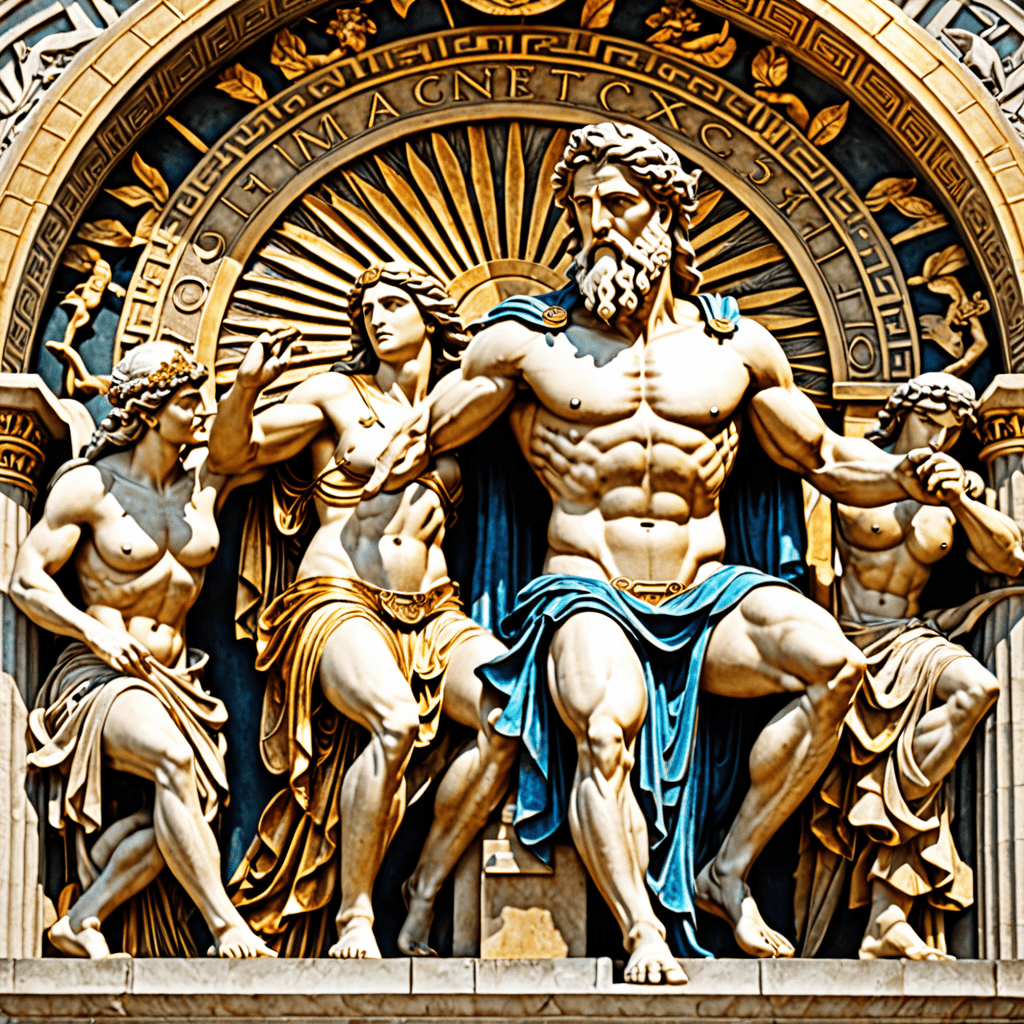1. Rebirth and Renewal in the Slavic Cosmos
In Slavic mythology, the concept of renewal is deeply intertwined with the cyclical nature of the cosmos. The Slavs believed in a threefold division of the world: Yav (the world of the living), Nav (the world of the dead), and Prav (the world of the gods). This division reflects a cyclical process of birth, death, and rebirth that governs all aspects of existence.
2. The Cycle of Life and Death: Yav, Nav, and Prav
The cycle of life and death is central to Slavic mythology. Yav, the world of the living, is a realm of light and activity. Nav, the world of the dead, is a realm of darkness and stillness. Prav, the world of the gods, is a realm of order and harmony. Each of these realms is interconnected and plays a vital role in the cycle of renewal.
3. The Slavic Mother Goddess and the Power of Renewal
The Slavic Mother Goddess, known as Mokoš, is a powerful figure associated with renewal and fertility. She is often depicted as a woman with long, flowing hair and a connection to water. Mokoš is believed to oversee the cycle of life and death and to have the power to grant new life.
4. Spring Festivals and the Celebration of Rebirth
Spring festivals played a significant role in Slavic culture, as they celebrated the renewal of life after the long winter months. The most important of these festivals was Maslenitsa, which marked the end of winter and the beginning of spring. During Maslenitsa, people would make pancakes and other foods associated with fertility and would often engage in folk games and dances to symbolize the coming of new life.
5. Rituals of Renewal: Purifying Baths, Fire, and Jumping over the Bonfire
Rituals of renewal were an important part of Slavic culture. These rituals were designed to cleanse the body and spirit and to promote new growth and strength. Common rituals included purifying baths, fire ceremonies, and jumping over a bonfire. Baths were believed to wash away impurities and to restore the body's vitality. Fire was seen as a powerful purifier and was used to cleanse both the body and the spirit. Jumping over a bonfire was a ritual that symbolized the transition from the old year to the new and from darkness to light.
6. The Symbolism of Water and its Role in Renewal
In Slavic mythology, water is a powerful symbol of renewal and purification. Springs, rivers, and lakes were believed to possess magical properties that could heal the sick, grant fertility, and cleanse the body and spirit. The Slavs often performed rituals near water sources, such as throwing coins into a spring to make a wish or bathing in a river to purify themselves.
7. The Myth of Perun's Axe and the Renewal of Creation
Perun, the god of thunder and lightning, is one of the most important gods in Slavic mythology. In one myth, Perun's axe is stolen by the evil god Veles. Perun retrieves his axe and uses it to strike the earth, creating a great chasm that separates Yav from Nav. This chasm symbolizes the separation of the living world from the world of the dead but also represents the possibility of renewal.
8. The Slavic Vampire and its Connection to Renewal
The Slavic vampire is a complex figure that represents both death and renewal. Vampires are believed to be the spirits of people who died prematurely or were cursed. They are often depicted as pale and gaunt, with sharp teeth and blood-red eyes. Vampires can be both harmful and helpful. They can bring disease and death, but they can also grant wishes and protect people from evil spirits.
9. Slavic Folktales and the Transformation of Characters
Slavic folktales are replete with stories of transformation and renewal. In many tales, characters undergo a journey or trial that leads to a profound change in their nature. These transformations can be physical, emotional, or spiritual. Often, the transformation involves a loss of innocence or a coming to terms with one's own mortality.
10. The Concept of Renewal in Contemporary Slavic Culture
The concept of renewal continues to play an important role in Slavic culture today. In the Czech Republic, for example, the tradition of "pomlázka" is still practiced. On Easter Monday, men and boys go from house to house whipping women and girls with pussy willow branches. This ritual is believed to bring health and fertility to the women and to promote the renewal of life after the long winter months.
FAQ
What is the Slavic concept of renewal?
The Slavic concept of renewal is deeply intertwined with the cyclical nature of the cosmos. The Slavs believed in a threefold division of the world: Yav (the world of the living), Nav (the world of the dead), and Prav (the world of the gods). This division reflects a cyclical process of birth, death, and rebirth that governs all aspects of existence.
What are some symbols of renewal in Slavic mythology?
Some symbols of renewal in Slavic mythology include:
- Water: Springs, rivers, and lakes were believed to possess magical properties that could heal the sick, grant fertility, and cleanse the body and spirit.
- Fire: Fire was seen as a powerful purifier and was used to cleanse both the body and the spirit.
- The Slavic Mother Goddess: The Slavic Mother Goddess, known as Mokoš, is a powerful figure associated with renewal and fertility.
- The Slavic vampire: The Slavic vampire is a complex figure that represents both death and renewal.
What are some rituals of renewal in Slavic culture?
Some rituals of renewal in Slavic culture include:
- Purifying baths: Baths were believed to wash away impurities and to restore the body's vitality.
- Fire ceremonies: Fire ceremonies were used to cleanse both the body and the spirit.
- Jumping over a bonfire: Jumping over a bonfire was a ritual that symbolized the transition from the old year to the new and from darkness to light.
How does the concept of renewal continue to play a role in Slavic culture today?
The concept of renewal continues to play an important role in Slavic culture today. In the Czech Republic, for example, the tradition of "pomlázka" is still practiced. On Easter Monday, men and boys go from house to house whipping women and girls with pussy willow branches. This ritual is believed to bring health and fertility to the women and to promote the renewal of life after the long winter months.


